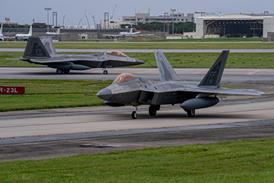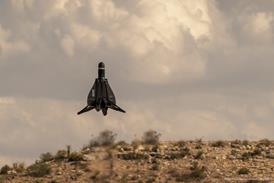The last fortnight marked the end of an era in the European aviation industry, with British Aerospace, Aerospatiale Matra and DaimlerChrysler Aerospace publishing their last sets of results as independent entities. True, the UK manufacturer reported as BAE Systems, but the result was essentially that of the old BAe.
Next year, the European landscape will have changed, with BAE reporting on a full 12 months in its new guise and the French and German companies taking the stage as European Aeronautic, Defense and Space (EADS).
Already, though, the precise shape of Europe's new industry is becoming apparent. The continent has two new super-companies, with the recent financials confirming the pair will be of similar size, ranking third and fourth in the world behind Boeing and Lockheed Martin.
Yet, although often bracketed together for obvious reasons, BAE and EADS are as different as Laurel and Hardy. In terms of sales clout they may be similar, but when viewed by sectoral strength, world exposure, management structure and relative efficiency they are starkly contrasting personalities.
Most significantly, they have very different core strengths. EADS is essentially a civil manufacturer, with its Airbus operation far and away the most important revenue earner, and its regional aircraft business and share in Dassault's civil operation also making a contribution. Other activities, although important, are essentially non-core subsidiary operations.
For BAE, Airbus work constitutes a rump activity, trailing behind its huge defence systems and military aircraft/support systems operations, so that in reality the UK firm and EADS go head-to-head in only a handful of areas.
At the same time, only 27% of BAE revenue is derived from sectors involving EADS - Airbus, the new missile house centred on Matra-BAE Dynamics, Eurofighter and space company Astrium - while 68% of the mainland European giant's turnover links it to the UK company through the same projects.
EADS' reliance on Airbus is such that the consortium's refashioning as the Airbus Integrated Company (AIC) is a must-do, especially if EADS is to realise its full value when it floats later this year. With this in its favour, BAE is looking to drive a hard bargain in agreeing the AIC transition, demanding full recognition of its workshare above and beyond its 20% stake.
Importantly, the nature of BAE's business defines it as a systems integrator, whereas EADS will bring together three companies (including Spain's CASA) for which airframing is still important and, in this sense, will remain a traditional "nuts and bolts" manufacturer.
The key question is which activity is best-suited to the demands of the modern market. There is little doubt that BAE scores highest here, with the value to be derived from defence systems work potentially far higher than that associated with airframing activities.
BAE has tailored its post-merger management structure to reflect these new realities. The company now has seven sectors, with civil aerospace, avionics, joint ventures, operations and its North American business the responsibility of one chief operating officer, and customer support and 11 programme divisions (from Eurofighter to the Type 45 destroyer) under another.
EADS is altogether more unwieldy, with an 11-man executive committee overlying a web of often duplicated posts.
BAE can also claim to be more efficient than EADS where the rationalisation task facing it is reflected in the gap in profitability between the French and German Airbus operations.
Another feather in BAE's cap is the global spread of its business base. It derives only 32% of sales from Europe, against 50% for EADS, and 46% from the rest of the world, minus the USA, as opposed to one-third for EADS. The UK-based company is also probably better placed to make further transatlantic moves. So while Europe's big two may box at the same weight, they have little else in common. At the moment, most of the differences favour BAE.
Source: Flight International























